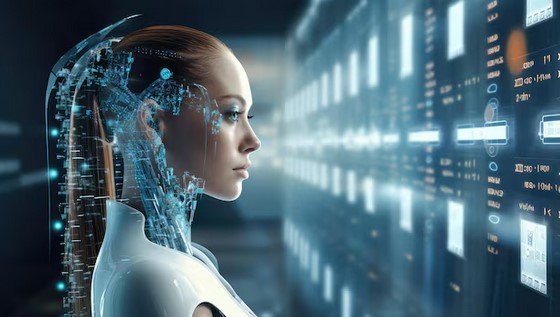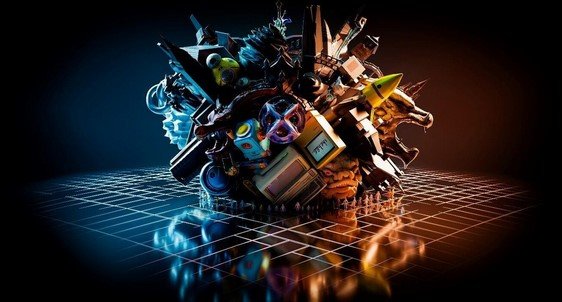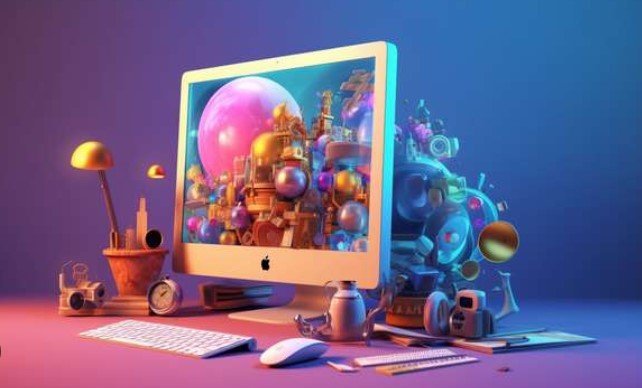The intersection of computer graphics and artificial intelligence (AI) is revolutionizing various industries, especially in entertainment and design. AI enhances the creation and utilization of computer graphics, offering new possibilities. In this post, we will explore how AI shapes the future of computer graphics and transforms visual experiences.

AI Enhances the Creation of Computer Graphics
AI plays a crucial role in enhancing the creation of computer graphics. Traditionally, animators and designers manually created assets, textures, and visual effects, a process that was both time-consuming and labor-intensive. Now, AI-driven tools automate many of these tasks, making the creation of high-quality visuals faster and more efficient.
AI algorithms analyze vast amounts of data to generate complex textures and realistic lighting effects. For example, AI can adjust lighting in a 3D scene automatically, ensuring that objects appear illuminated by natural light sources. This reduces the need for manual adjustments and streamlines the creative process.
AI Improves Image Generation
AI’s impact on image generation has been one of the most exciting developments in computer graphics. Generative Adversarial Networks (GANs) are a type of AI that creates realistic images by learning from existing datasets. GANs use two networks—one generates images, while the other evaluates them, improving their quality over time.
This technology is already making significant strides in various fields, including gaming, film production, and art. AI-generated images create backgrounds, characters, and other elements, offering animators and graphic designers more creative flexibility. GANs are now integrated into design workflows, enhancing productivity and enabling faster turnaround times.
AI Improves Animation and Motion Capture
AI also significantly improves animation and motion capture. Traditionally, animators used motion capture technology to track human movements and transfer them to digital characters. While effective, this method had limitations when capturing complex movements and required precise equipment.
With AI, animators can now create more fluid, lifelike animations with less data. Machine learning algorithms predict and enhance human movements, making digital characters move more naturally. AI-driven systems also automate the retargeting process, transferring motion data from one character to another without manual intervention. This makes animation production more efficient and accurate, allowing animators to focus on creative tasks.
AI Boosts Real-Time Graphics Rendering
AI is revolutionizing real-time graphics rendering, a critical area in video games and interactive media. Real-time rendering ensures that graphics are rendered instantly for seamless user experiences. Traditionally, this required significant computational power and was a slow process.
AI is improving rendering times by accelerating the process. AI-powered rendering engines predict how light interacts with different surfaces, reducing the need for extensive calculations. These predictive techniques allow for faster rendering of high-quality images, making real-time experiences smoother and more immersive. As a result, gamers and viewers can enjoy more detailed graphics without lag or delays.
The Future of AI and Computer Graphics
The future of AI and computer graphics is promising. Advancements in deep learning, computer vision, and neural networks will likely continue to enhance the quality and efficiency of computer graphics. AI may eventually lead to fully autonomous content creation, where machines design, animate, and render graphics with minimal human input.
In addition, AI will play a key role in augmented reality (AR) and virtual reality (VR) experiences. AI can improve the realism of virtual environments, making them more interactive and responsive to user actions. As the technology evolves, AI-driven graphics could adapt in real-time to users’ behaviors and preferences, creating more personalized visual experiences.
Conclusion
The intersection of computer graphics and AI is driving major advancements in the creative industries. AI automates graphic creation, enhances animations, and improves real-time rendering. As technology evolves, the collaboration between computer graphics and AI will continue to deepen, leading to more innovative and immersive visual experiences. The future of computer graphics, powered by AI, promises to transform how we create, experience, and interact with digital content.



